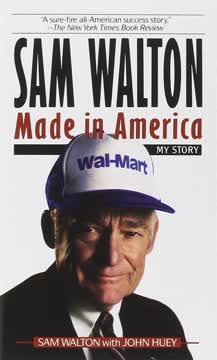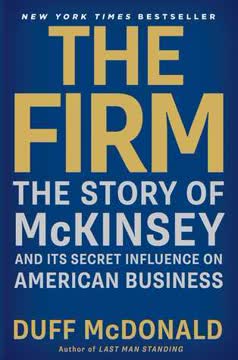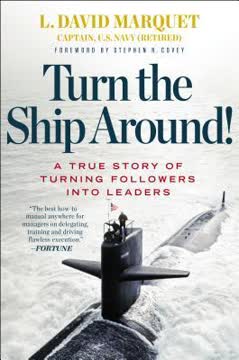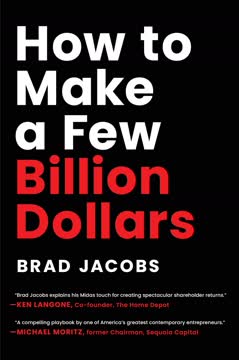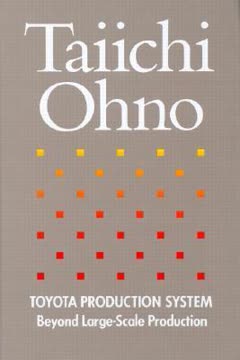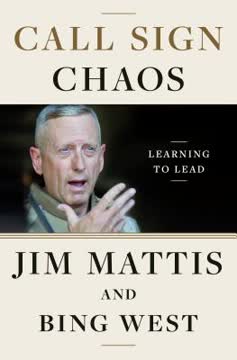重点摘要
1. 精益生产革新制造业,超越大规模生产
精益生产是一种更优越的人类制造方式。
范式转变。 精益生产代表了制造理念的根本转变,结合了手工生产和大规模生产的最佳特性。与传统的大规模生产方法相比,它降低了成本,提高了质量,并提供了更大的产品多样性。
历史背景。 这一概念在二战后于日本出现,主要由丰田公司发展。它解决了自亨利·福特时代以来主导制造业的大规模生产的局限性。精益生产的优越性体现在:
- 更高的生产力:精益制造商在生产一定数量的商品时需要更少的人力
- 改善的质量:缺陷更少,产出更一致
- 增强的灵活性:能够用相同的设备生产更广泛的产品
- 减少的库存:准时生产最小化了存储需求
- 提高的员工满意度:更大的参与感和解决问题的机会
2. 丰田引领精益生产,强调效率与质量
丰田将其内部供应链操作分拆为准独立的一层供应商公司,丰田保留了一部分股权,并与其他完全独立的供应商建立了类似的关系。
丰田生产系统。 丰田的制造方法由大野耐一等人开发,构成了精益生产的基础。关键要素包括:
- 消除各种形式的浪费(muda)
- 持续的生产流动
- 库存管理的拉动系统
- 最佳实践的标准化
- 内置的质量控制
供应商关系。 丰田通过以下方式革新了供应商管理:
- 创建分层供应商系统
- 促进基于互利的长期合作关系
- 鼓励供应商创新和改进其流程
- 在整个供应链中分享知识和最佳实践
这种方法与大规模生产系统中常见的对抗性关系形成鲜明对比,导致质量改善、成本降低和更快的创新周期。
3. 精益生产最小化浪费,最大化价值创造
精益生产的基本理念是普遍适用的——任何地方的任何人都可以应用,而许多非日本公司已经对此有所领悟。
消除浪费。 精益生产识别并消除八种类型的浪费:
- 过度生产
- 等待
- 运输
- 过度加工
- 库存
- 动作
- 缺陷
- 未使用的员工创造力
价值创造。 通过关注客户需求并消除非增值活动,精益生产提高了整体效率和有效性。这种方法:
- 缩短交货时间
- 改善产品质量
- 降低生产成本
- 提高客户满意度
- 增强员工参与感
这些原则的普遍性意味着精益生产可以跨行业和文化应用,尽管实施可能会根据具体情况有所不同。
4. 准时制系统转变供应链管理
大野的想法是将大量供应商和零部件工厂转变为一台大型机器,类似于亨利·福特的高地公园工厂,规定零件仅在每个前一步骤中生产,以满足下一步骤的即时需求。
同步生产。 准时制(JIT)系统通过以下方式革新了库存管理和生产调度:
- 仅在需要时、按需生产所需数量
- 降低库存水平及相关成本
- 改善现金流,减少营运资本需求
看板系统。 丰田实施JIT的方法使用视觉信号(看板)来触发生产和材料移动:
- 确保材料在生产过程中的顺畅流动
- 防止过度生产,最小化库存积压
- 快速识别瓶颈和质量问题
JIT需要与供应商密切协调,并在稳定的生产环境中有效运作。成功实施时,它能显著减少浪费,提高整体效率。
5. 持续改进与问题解决推动精益生产
丰田始终能够追溯每个缺陷零件的根本原因,并确保制定解决方案,防止此类错误再次发生。
改善文化。 持续改进是精益生产的基石,培养一种所有员工参与识别和实施改进的文化:
- 定期的小改进随着时间的推移积累成显著的收益
- 赋予各级员工提出想法的权力
- 创建一个动态和适应性强的组织
问题解决技术。 精益生产采用系统化的方法识别和解决问题:
- 根本原因分析(例如,“5个为什么”技术)
- 计划-执行-检查-行动(PDCA)循环
- 视觉管理工具(例如,安灯板)
这些方法确保问题不仅仅是暂时修复,而是从源头消除,防止再次发生,并持续改进生产系统。
6. 精益产品开发加速创新并降低成本
精益生产者明确追求完美:持续降低成本、零缺陷、零库存和无尽的产品多样性。
高效设计流程。 精益产品开发通过以下方式简化创新过程:
- 从一开始就涉及跨职能团队
- 使用基于集合的并行工程同时探索多个设计选项
- 强调早期问题解决,以减少成本高昂的后期变更
快速原型和测试。 精益开发通过以下方式加速产品周期:
- 创建快速、低保真的原型进行早期测试
- 在整个开发过程中融入客户反馈
- 使用模块化设计原则以提高灵活性并降低成本
这种方法使公司能够更快地将新产品推向市场,降低开发成本,并更好地与客户需求对接。它还使产品更新更频繁,提供更广泛的产品选择。
7. 精益生产重塑劳动力动态和管理实践
在精益生产中,动态工作团队成为精益工厂的核心。
团队基础组织。 精益生产围绕多技能团队重新组织工作:
- 员工接受多项技能培训并轮换岗位
- 团队负责质量、维护和持续改进
- 更扁平的组织结构,管理层级更少
领导与管理。 在精益组织中,管理者的角色发生了转变:
- 领导者成为教练和促进者,而不仅仅是监督者
- 决策权下放到最低适当层级
- 管理者专注于发展员工和改善流程
这种方法提高了员工参与度,改善了问题解决能力,创造了一个更灵活和适应性强的组织。然而,这也需要企业文化和管理实践的重大转变。
8. 精益生产的全球传播面临文化和组织挑战
当前时刻的重大挑战是避免再次犯同样的错误。
文化障碍。 在不同文化中实施精益生产面临挑战:
- 来自传统大规模生产思维的变革抵制
- 工作伦理和团队动态的差异
- 员工赋权和主动性的不同水平
组织障碍。 现有结构和实践可能阻碍精益的采用:
- 僵化的等级制度和部门壁垒
- 短期财务关注与长期精益投资的冲突
- 缺乏领导承诺和理解
成功的精益生产全球传播需要:
- 在保持核心概念的同时,将精益原则适应当地背景
- 在各个层面进行广泛的培训和教育
- 展示明确的好处以获得利益相关者的支持
- 在推动文化和组织变革时保持耐心和坚持
9. 精益生产超越制造业,延伸至服务行业
精益生产要求学习更多专业技能,并在团队环境中创造性地应用这些技能,而不是在僵化的等级制度中。
服务行业应用。 精益原则越来越多地应用于非制造领域:
- 医疗保健:改善患者流动,减少等待时间,提高护理质量
- 金融服务:简化流程,减少错误,提高客户服务
- 软件开发:敏捷方法论融入了许多精益概念
服务的适应。 精益概念被修改以适应服务行业的需求:
- 信息流的价值流图
- 在保持灵活性以满足客户需求的同时标准化最佳实践
- 应用拉动系统管理工作负载和产能
将精益原则扩展到服务领域,展示了其普遍适用性和在不同产业中提高效率和质量的潜力。
10. 产业的未来取决于精益原则的广泛采用
精益生产是脆弱的。
竞争优势。 成功实施精益生产的公司获得显著优势:
- 更高的生产力和质量
- 更大的灵活性和对市场变化的响应能力
- 改善的创新能力
- 提高的客户满意度
采用挑战。 尽管有其好处,精益生产在广泛采用中面临障碍:
- 来自既有大规模生产组织的抵制
- 短期财务压力与长期精益投资的冲突
- 在波动市场条件下维持精益实践的困难
全球产业的未来将由公司如何有效克服这些挑战并全面拥抱精益原则来塑造。那些成功的公司可能会主导其行业,而那些未能适应的公司可能会面临竞争压力。
最后更新日期:
FAQ
What's The Machine That Changed the World about?
- Focus on Lean Production: The book delves into lean production, a system developed by Toyota, which contrasts with traditional mass production by enhancing efficiency and quality while reducing waste.
- Historical Context: It provides a comprehensive history of the automotive industry, tracing the evolution from craft to mass to lean production, highlighting the significance of these shifts.
- Global Impact: Lean production's relevance extends beyond automotive, with applications in various sectors like healthcare and services, revolutionizing global industry practices.
Why should I read The Machine That Changed the World?
- Management Insights: Offers valuable insights into management and production efficiency, emphasizing teamwork and continuous improvement, applicable to any organization.
- Real-World Examples: Includes case studies from Toyota and others, illustrating practical applications of lean principles, making concepts relatable and understandable.
- Timeless Relevance: Despite its 1990 publication, the principles remain relevant, providing lessons applicable to modern business challenges.
What are the key takeaways of The Machine That Changed the World?
- Lean vs. Mass Production: Highlights lean production's superiority in efficiency, quality, and flexibility, reducing waste and improving responsiveness to customer needs.
- Five Elements of Lean: Outlines critical elements like product design, supply chain coordination, and enterprise management essential for successful lean implementation.
- Cultural Shift: Emphasizes the need for a cultural shift focusing on employee empowerment and continuous improvement to sustain lean practices.
What is lean production, as defined in The Machine That Changed the World?
- Definition of Lean Production: A system using less of everything compared to mass production, aiming for perfection with zero defects and continuous improvement.
- Key Characteristics: Emphasizes flexibility, teamwork, and waste elimination, encouraging workers to take responsibility and seek improvements.
- Comparison to Mass Production: Unlike mass production's focus on high volume, lean production offers product variety while maintaining quality and low costs.
How does The Machine That Changed the World compare lean production to mass production?
- Efficiency and Waste: Lean production is more efficient, reducing excess inventory and waste, streamlining processes, and eliminating unnecessary steps.
- Quality Control: Emphasizes quality at every stage, preventing defects proactively, unlike mass production's reliance on post-production inspection.
- Flexibility: Lean systems are more adaptable to changing customer demands, essential in today's fast-paced market environment.
What are the five elements of a lean business system mentioned in The Machine That Changed the World?
- Product Design: Focuses on manufacturability and simplicity, designing products that meet customer needs and are easy to manufacture.
- Supply Chain Coordination: Involves just-in-time delivery and minimizing inventory, fostering long-term supplier relationships based on mutual benefit.
- Customer Relations: Emphasizes understanding customer needs and involving them in product development, building long-term relationships.
- Production Processes: Designed to minimize waste and maximize efficiency, using techniques like value stream mapping to eliminate non-value-added activities.
- Enterprise Management: Aligns all departments towards common goals of efficiency and quality, managing the enterprise as a cohesive unit.
What challenges do organizations face when transitioning to lean production, according to The Machine That Changed the World?
- Resistance to Change: Employees may resist changes due to fear of job loss or increased pressure, requiring strategies to overcome this resistance.
- Need for Training: Organizations must invest in training employees on lean principles, essential for building necessary skills in a lean environment.
- Cultural Barriers: Existing company cultures may not align with lean principles, necessitating a shift towards valuing teamwork, empowerment, and continuous improvement.
How does The Machine That Changed the World illustrate the differences between mass production and lean production?
- Historical Examples: Compares Ford and GM's practices with Toyota's, showing how lean production addresses inefficiencies and quality issues of mass production.
- Case Studies: Examples like the NUMMI plant demonstrate successful lean implementation in traditional mass-production environments, highlighting practical benefits.
- Performance Metrics: Uses metrics to show differences in productivity and quality, with lean plants like Toyota's Takaoka being more productive and having lower defect rates.
What role does customer feedback play in lean production, as discussed in The Machine That Changed the World?
- Direct Link to Production: Establishes a direct connection between customer feedback and production, allowing quick responses to changing preferences.
- Continuous Improvement: Integral to identifying areas for enhancement, informing product development to better meet market demands.
- Building Relationships: Prioritizes customer needs, ensuring products are tailored to preferences, fostering stronger customer relationships.
What is the significance of the Toyota Production System (TPS) in The Machine That Changed the World?
- Foundation of Lean Production: TPS is the foundational model for lean production, emphasizing waste reduction, continuous improvement, and respect for people.
- Global Influence: TPS has inspired global manufacturing practices, leading to broader recognition of lean production benefits beyond automotive.
- Cultural Integration: TPS integrates employees at all levels into the production process, crucial for successful lean practice implementation.
How does The Machine That Changed the World address the global diffusion of lean production?
- Global Adoption: Discusses lean production's spread beyond Japan to other countries and industries, driven by the need for efficiency and competitiveness.
- Case Studies of Implementation: Examples from North America and Europe illustrate challenges and successes in adopting lean practices in different contexts.
- Future Implications: Suggests lean production's continued spread will profoundly affect global manufacturing and economies, emphasizing adaptation for future success.
What are the best quotes from The Machine That Changed the World and what do they mean?
- "The machine that is changing the world is this complete lean business system.": Emphasizes lean production as a holistic system transforming business operations, highlighting interconnectedness.
- "Lean production is a system that uses less of everything compared to mass production.": Captures lean production's essence, focusing on efficiency and waste reduction, achieving more with less.
- "The quest for perfection continues to generate surprising twists.": Reflects ongoing improvement in lean production, suggesting innovation and better practices arise from pursuing perfection.
评论
《改变世界的机器》被誉为汽车工业精益生产的里程碑式研究。读者们欣赏其历史背景和对生产方法的深刻见解,尽管有些人觉得内容较为繁琐且显得过时。该书比较了手工、批量和精益生产,突出了丰田的创新。虽然主要聚焦于汽车,但许多人发现其原则具有广泛的适用性。一些人批评其对日本方法的偏见。总体而言,尽管年代久远,该书仍被视为理解精益原则的重要著作。
Similar Books
